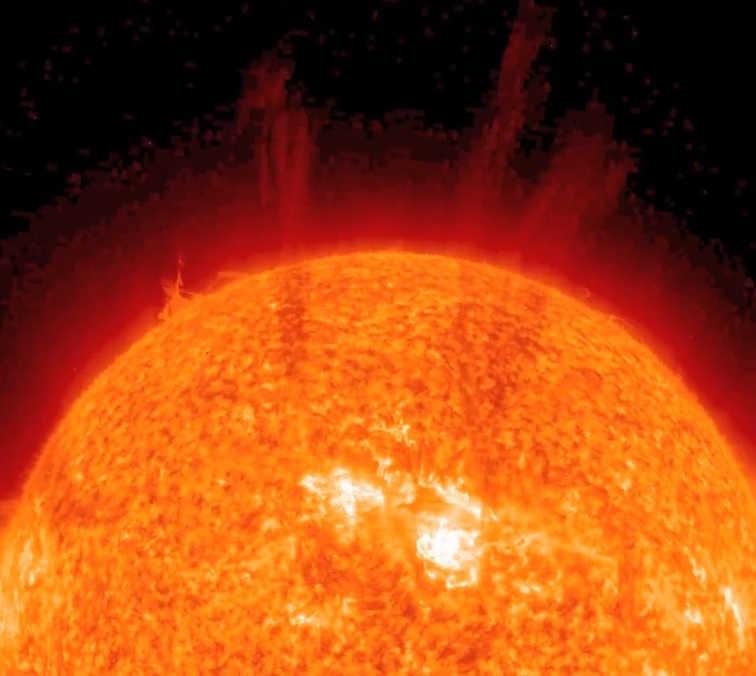Sun Opens Explosive Plasma 'Arms' in Solar Eruption (Video)

A sun-watching spacecraft spotted our closest star opening its arms to the cosmos. Two strands of plasma from an eruption in the sun's atmosphere were captured in observations with NASA's STEREO A satellite.
The plasma arms broke out from a sunspot in a 12-hour-long event that occurred from July 21-22, 2013, according to NASA. The solar phenomenon was observed in a wavelength of extreme UV light and condensed into a time-lapse video.
STEREO A and its sister spacecraft STEREO B launched in 2006 as part of NASA's Solar Terrestrial Relations Observatory. They are just two of the space agency's satellites tasked with monitoring the sun's activity. There's also the long-lived Solar and Heliospheric Observatory, or SOHO, which launched in 1996 and recently spotted a gigantic hole covering nearly a quarter of the atmosphere over the sun's north pole.
The sun is currently reaching its 11-year peak in activity, known as the solar maximum. During this period, there are more sunspots causing a boost in solar flares and ejections, though this cycle is shaping up to be the weakest in a century, scientists have said.
This story was provided by SPACE.com, a sister site to LiveScience. Follow SPACE.com on Twitter @Spacedotcom. We're also on Facebook and Google+.
Get the world’s most fascinating discoveries delivered straight to your inbox.




